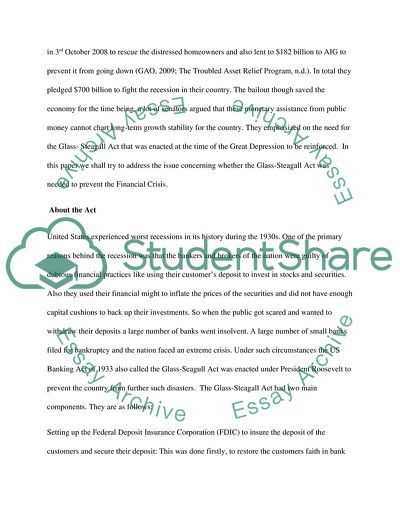Cite this document
(The Repeal of the US Banking Act 1933 Assignment - 1, n.d.)
The Repeal of the US Banking Act 1933 Assignment - 1. Retrieved from https://studentshare.org/macro-microeconomics/1750485-the-repeal-of-the-us-banking-act-1933-commonly-known-as-the-glass-steagall-act-was-a-substantial-cause-of-the-global-banking-crisis-of-200708-critically-analyse-the-validity-of-this-proposition
The Repeal of the US Banking Act 1933 Assignment - 1. Retrieved from https://studentshare.org/macro-microeconomics/1750485-the-repeal-of-the-us-banking-act-1933-commonly-known-as-the-glass-steagall-act-was-a-substantial-cause-of-the-global-banking-crisis-of-200708-critically-analyse-the-validity-of-this-proposition
(The Repeal of the US Banking Act 1933 Assignment - 1)
The Repeal of the US Banking Act 1933 Assignment - 1. https://studentshare.org/macro-microeconomics/1750485-the-repeal-of-the-us-banking-act-1933-commonly-known-as-the-glass-steagall-act-was-a-substantial-cause-of-the-global-banking-crisis-of-200708-critically-analyse-the-validity-of-this-proposition.
The Repeal of the US Banking Act 1933 Assignment - 1. https://studentshare.org/macro-microeconomics/1750485-the-repeal-of-the-us-banking-act-1933-commonly-known-as-the-glass-steagall-act-was-a-substantial-cause-of-the-global-banking-crisis-of-200708-critically-analyse-the-validity-of-this-proposition.
“The Repeal of the US Banking Act 1933 Assignment - 1”. https://studentshare.org/macro-microeconomics/1750485-the-repeal-of-the-us-banking-act-1933-commonly-known-as-the-glass-steagall-act-was-a-substantial-cause-of-the-global-banking-crisis-of-200708-critically-analyse-the-validity-of-this-proposition.


